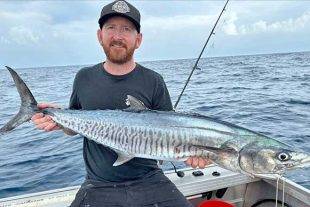Carp Virus – Researchers at the University of Adelaide found that in many Australian inland waterways, risks to water quality associated with the potential release of the carp virus would be minimal in many areas and manageable in others.
“If the carp virus is released to control carp,” explains Principal Investigator Justin Brooks “the ecosystem will need to cope with a surge in the number of dead carp, an increased demand for dissolved oxygen and the presence of more nutrients. This work has shown the impacts on water quality would be minimal in many waterways where there is good flow and mixing and manageable where the flow is slower.”
The study’s models show that areas with good flow, depth and cooler waters would likely cope best, whereas shallower waters with low or no flow and warmer temperatures are more likely to experience water quality impacts, especially if the density of carp is high. These waterbodies might require some intervention to clean up dead carp to avoid significant impacts on water quality.
The main threats to water quality include a reduction in the concentration of oxygen in the water and the possibility of associated algal blooms. The first is due to the oxygen consumption of organisms working to decompose dead carp, whereas the second is a result of an increase of nutrients present in the water as dead carp break down.
The research showed that at the existing biomass of carp, it would be unlikely that oxygen concentrations would drop below levels that are dangerous for native fish in most waterways.
In many locations, the research showed that the existing biomass of carp would have to be increased by more than four times before water quality impacts would become noticeable.
The research means that management of carp carcasses can focus on the higher risk sites which have still water and higher temperatures.
This research project is an important part of the National Carp Control Plan (NCCP). The NCCP is a $10.2 million program led by the Fisheries Research and Development Corporation, on behalf of the Australian Government. It aims to address two questions: Is it feasible to release the carp herpes virus to control carp? If so what is the most effective way to release and manage the virus?
This project provides some of the science to help answer these questions.
The NCCP will be delivered to the Australian Government in December 2019. The Australian Government will then decide on the next steps.
The NCCP was formed to investigate the feasibility of releasing a virus to control carp in Australian waterways.
Carp (Cyprinus carpio) completely dominate freshwater fish communities in south eastern Australia. Carp impacts are felt environmentally, economically and socially. Carp affect water quality, native fish, fishing and irrigation. Carp impacts are felt environmentally, economically and socially.
carp virus carp virus carp virus carp virus carp virus carp virus carp virus
 Bush 'n Beach Fishing Magazine Location reports & tips for fishing, boating, camping, kayaking, 4WDing in Queensland and Northern NSW
Bush 'n Beach Fishing Magazine Location reports & tips for fishing, boating, camping, kayaking, 4WDing in Queensland and Northern NSW








